The book presents the history and the doctrines of the Ajivikas who formed a third heretical sect besides the sect of Gautama Buddha, the founder of Buddhism and that of Mahavira Vardhamana, the twenty-B fourth Tirthankara of the Jainas. The three heterodox sects react against the ritualistic creed of the Vedists.
The cult of Ajivikas was founded by Makkhali Gosal, the contemporary of Mahavira Vardhamana, on the basis of strict determinism with a belief in the all-embracing rule of Niyati (principle of order). According to Gosal, it was Niyati which ultimately governed our action, controlled phenomena and left no room for human volition.
It will throw new light on any interesting and significant aspect of India’s past, and will encourage further research.
This book is divided into fifteen chapters discussing elaborately different aspects of the subject matter. The comprehensive Bibliography and index are the added features for the researchers for comparative as well as further study of yet unexplored areas.
Prof. A.L. Basham, a versatile genius, was a legendary figure in the field of Indology. He was a great teacher and produced as many as hundred Ph. D. students.
He has number of books to his credit - The Wonder That Was India, The Indian Sub-Continent in Historical Perspective, Studies in Indian History and Culture, Aspects of Ancient Indian Culture. His edited volumes are - Papers on the date of Kaniskha, The Civilization of Monsoon Asia, A Cultural History of India. He also published number of research papers I different reputed journals and volumes of the world.
It is gratifying to write a Foreword to History and Doctrines of the Ajivikas written by A.L. Basham. The book exhibits quite clearly the origin and development of the Ajivikas sect in ancient India. In the sixth century B.E. in Magadha, three unorthodox sects developed almost in the same region. All these three sects were seeking satisfying explanations of the sacrifice and the Upanisadic gnosis. The doctrines of these three sects were propagated by Mahavira, Buddha and Gosala. In course of time the doctrines of Mahavira and Buddha became famous and the doctrines of Gosala past into the land of oblivion. Basham has restored this sect in his The Ajivikas. At the time of Mahavira, the Ajivikas were powerful and Mahavira had to encounter with the views of the Ajivikas.
It is a fact worthnoting that the Ajivika sect was very much alive till the Mauryan period and it was due to the patronage of Asoka, it reached its zenith. After that the Ajivikas community dwindled rapidly in Northern India and soon became long-extinct. In South India, it, however, survived for a long period, perhaps, untill the 14th century A.D.
Though A.W.F. Hoernley wrote an article on the Ajivikas in the Encyclopedia of Religion and Ethics (Vol. I) edited by Hastings, and Rockhill in the Life of Buddha, Appendix II, R.G. Bhandarkar and K.P. Pathak in the Indian Antiquary, Vol. XL, 1912, Basham’s contribution to the subject is the best till now.
Basham in his book The Ajivikas has nicely delineated the history and the doctrines of the Ajivikas and has restored quite authentically one of the vanished Indian religion. Every statement of Professor Basham is authenticated with lots of supporting documents culled from different fields of studies: literary, inscriptional, and even from the art pictures. A book like this has a perennial source of information.
It is quite in the fitness of things that this book is being reprinted again for the benefit of the scholars, so that this lost religion is kept alive from generation to generation.
2nd Foreword
Both in religious and in social life movements of extreme intensity are apt to engender opposite forces. This rule of human nature is strikingly exemplified by the development of religion in Ancient India. Here history began with the dominance of Vedism, a group of polytheistic cults autocratically engineered the Brahmans, who vigorously claimed that the welfare and indeed the very existence of the world, including even the gods, depended upon the maintenance of their systems of sacrifice, which grew to immense size and complexity. Dissent from this crude creed first appeared in the Upanisads, in which a few liberal-minded Brahmans, perhaps supported by some of the military aristocracy, put forward speculations of an elementary monistic idealism, while leaving the edifice of Vedism intact for the use of the unenlightened. But a far greater peril to Brahmanic ritualism arose about this time, and spread far and wide, affecting some few of the Brahmans themselves; for now the very foundations of Brahmanic orthodoxy were uncompromisingly denied, and preachers of what they claimed to be new and true doctrine arose on many sides. This radical movement assumed many phases. In some circles, Brahmanic and non- Brahmanic, it appeared in the form of a coarse atheistic materialism associated with the name of Carvaka. Elsewhere it took a less crude shape. Among the aristocratic clans of the North two noblemen came under its influence, and created churches: they were Gautama Buddha, the founder of Buddhism, and Mahavira Vardhamana, whom the Jains revere as their twenty-fourth Tirthankara. But besides these and some other less successful leaders of gentle birth there was a multitude of men of humble origin noisily preaching their heresies in various wise; and among these the Ajivikas played a part of some importance, if not of great glory.
The history of this queer sect is reconstructed by Dr. Basham in the following pages with much skill and scholarly thoroughness. As he shows, their reputation has been somewhat unfairly blackened by the odium theologicum of their rivals, the Buddhists and the Jains; and they deserve some credit for the obstinate consistency and intellectual honesty with which they clung to their doctrine of predestination, to the exclusion of all other principles. Logically, of course, one may ask how believers in that dismal creed can submit themselves voluntarily to self- torture and even to death in pursuance of it; But man is not a logical creature: he does not abstain from effort although he may believe the issue to be predetermined, as the example of Calvin and his Church shows.
For a long period, extending from early classical times to the middle of the Medieval period, our knowledge of Ajivika history is a blank, for no records or those years have survived. Then the curtain rises again, and we find abundant documents in inscriptions of the Tamil and Kanarese areas and in a few works of southern literature. These show that in the intervening centuries the Ajivikas had undergone changes such as are usual in the development of Indian religious bodies: the little congregation had hardened into a caste—community of considerable size, and the figure of its founder had assumed features of divinity. The story that is here narrated is indeed a highly interesting and instructive chapter in, the vast record of Indian thought.
| Foreword by Prof. Satya Ranjan Banerjee | xi | |
| Foreword By Dr. L.D. Barnett | xiii | |
| Preface to The Second Edition | xv | |
| Abbreviations | xxi | |
| I | Introduction | 3 |
| The Historical Background to the Rise of Ajivikism. | ||
| II | The Six Heretics | |
| The Record of the Samanna-phala Sutta… | 11 | |
| Other Buddhist References to the Doctrines of the Heretics | 18 | |
| III. | Makkhali Gosala and His Predecessors | |
| Ajivika Leads before Makkhali Gosala | 27 | |
| Nanda Vaccha and Kisa Sankicca | 27 | |
| The Immediate Predecessors of Makkhali Gosala | 30 | |
| Makkhali Gosala | 34 | |
| Birth of Makkhali Gosala | 35 | |
| The Meeting of Gosala with Mahavira | 39 | |
| The Peregrinations of the Two Ascetics | 41 | |
| Gosala and the Sesamum Plant | 47 | |
| Gosala and Vesiyayana | 49 | |
| Gosala Attains Magical Power and becomes the Leader of the Ajivikas | 50 | |
| IV. | The Last Days of Makkhali Gosala | |
| The Six Disacaras | 56 | |
| Gosala is Exposed by Mahavira | 58 | |
| Gosala Visits Mahavira | 60 | |
| Gosala’s Delirium | 61 | |
| Ayampula Visits Gosala | 62 | |
| Gosala’s Repentance and Death | 64 | |
| The Date of Gosala’s Death | 66 | |
| The Name and Titles of Makkhali Gosala | 78 | |
| V. | Purana and Pakudha | |
| Purana Kassapa | 80 | |
| The Death of Purana | 84 | |
| Pakudha Kaccayana | 90 | |
| VI. | The Early Ajivika Community (I) | |
| The Wandering Philosophers | 94 | |
| Etymology of the Term Ajivika | 101 | |
| The Ajivika Initiation | 104 | |
| Ajivika Nudity | 107 | |
| The Ajivika Sabha | 115 | |
| Song and Dance | 116 | |
| VII. | The Early Ajivika Community (II) | |
| Begging and Dietary Practices | 118 | |
| Accusations of Worldliness and Immorality | 123 | |
| The Final Penance | 127 | |
| Ajivika Laymen | 131 | |
| Relations between Ajivikas and Buddhists | 134 | |
| Relations between Ajivikas and Jainas | 138 | |
| VIII. | Ajivikas in the Nanda and Maurya Periods | |
| Mahapadma | 142 | |
| Ajivikism in Maurya Times | 145 | |
| The Barabar and Nagarjuni Caves | 150 | |
| IX. | Ajivikas In Later Times | |
| References in Sanskrit Literature | 161 | |
| Varahamihira and Utpala | 168 | |
| Silanka and the Trairasikas | 174 | |
| Nemicandra on the Ajivikas | 181 | |
| Lexicographical References | 182 | |
| The Last References to Ajivikas | 184 | |
| X. | The Southern Ajivikas | |
| The Inscriptions | 186 | |
| Ajivikas in Tamil Literature | 196 | |
| Appendix To Part I-The Iconoclast Ascetics of Kashmir | 205 | |
| XI. | Ajivika Scriptures | |
| The Mahanimittas, the Maggas, and the Onpatu-katir | 213 | |
| Pali and Prakrit Quotations | 216 | |
| Quotations by the Commentators | 220 | |
| XII. | Niyati | 224 |
| Niyativada Dialectic | 228 | |
| The Development of the Niyati Doctrine | 235 | |
| XIII. | Ajivika Cosmology | |
| The Categories of the Samann-phala Sutta | 240 | |
| The Eight Last Things | 254 | |
| The Six Inevitables | 255 | |
| Other Ajivika Categories | 256 | |
| Mandala-moksa | 257 | |
| XIV. | Other Doctrines of the Ajivikas | |
| The Elements | 263 | |
| Ajivika Atomism in Relation to other Indian Atomic Doctrines | 267 | |
| The Soul | 270 | |
| The Gods | 272 | |
| Ajivika Logic | 274 | |
| The Status of Makkhali Gosala | 275 | |
| XV. | Conclusion | |
| Summary | 278 | |
| Dr. Barua’s Three Questions | 279 | |
| The Influence of the Ajivikas | 279 | |
| The Place of the Ajivikas in Indian History | 283 | |
| Bibliography | 289 | |
| Index | 301 |
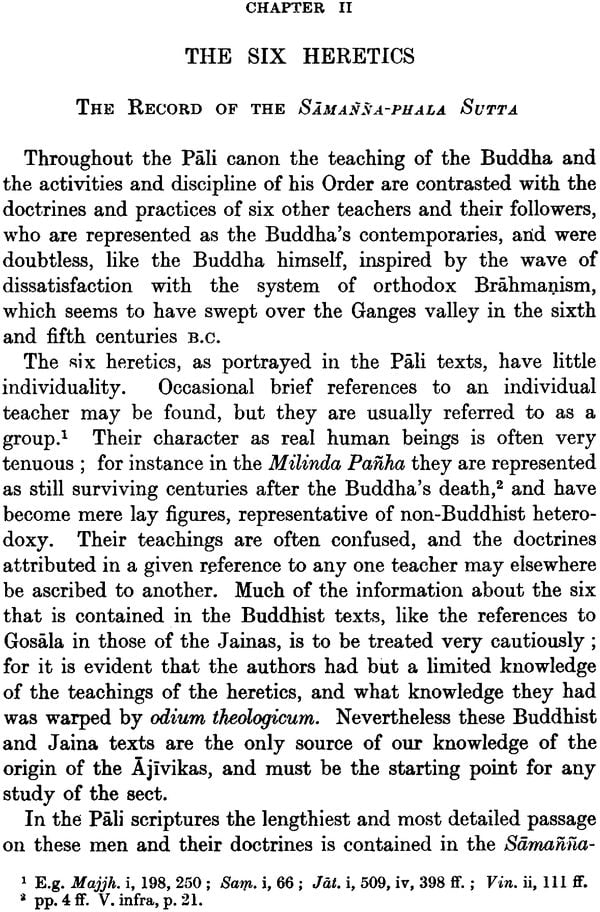
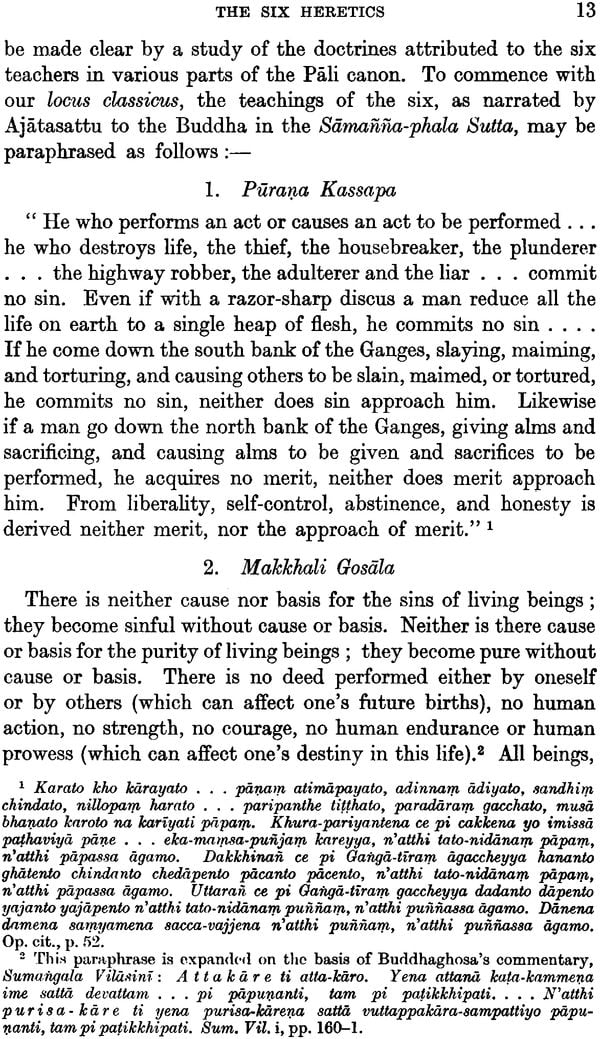
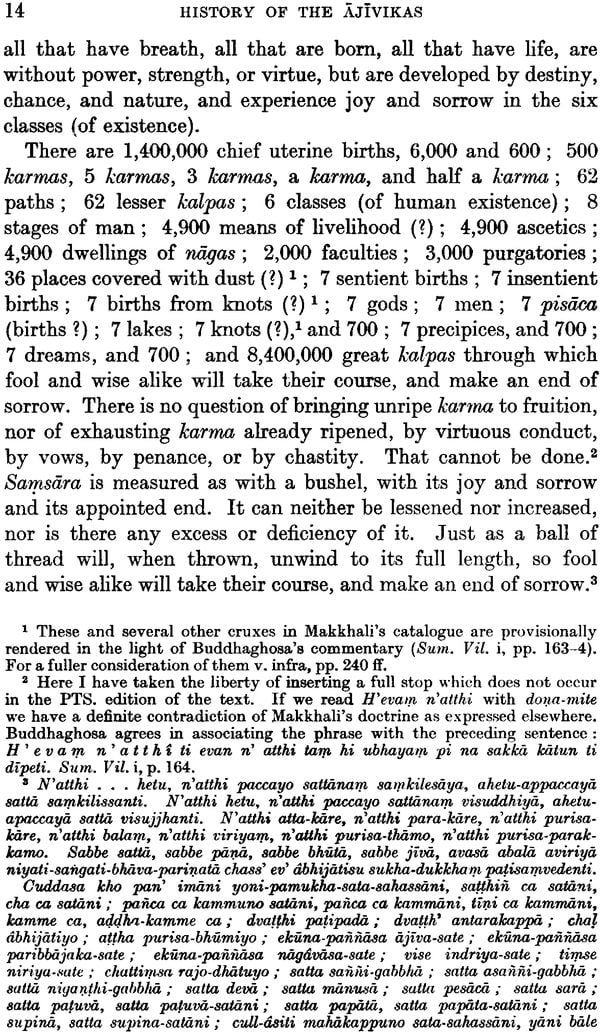
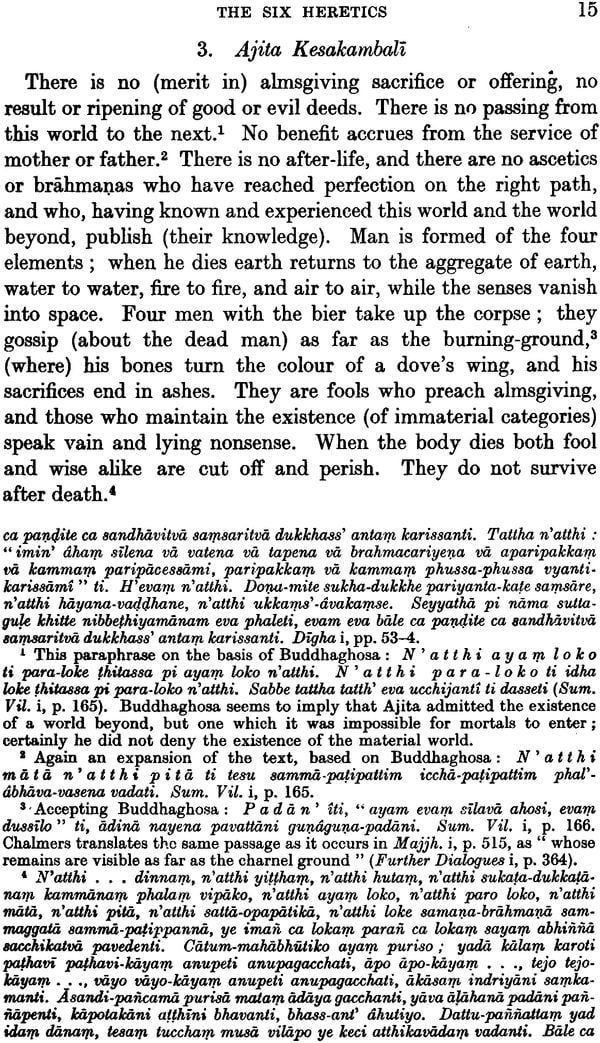
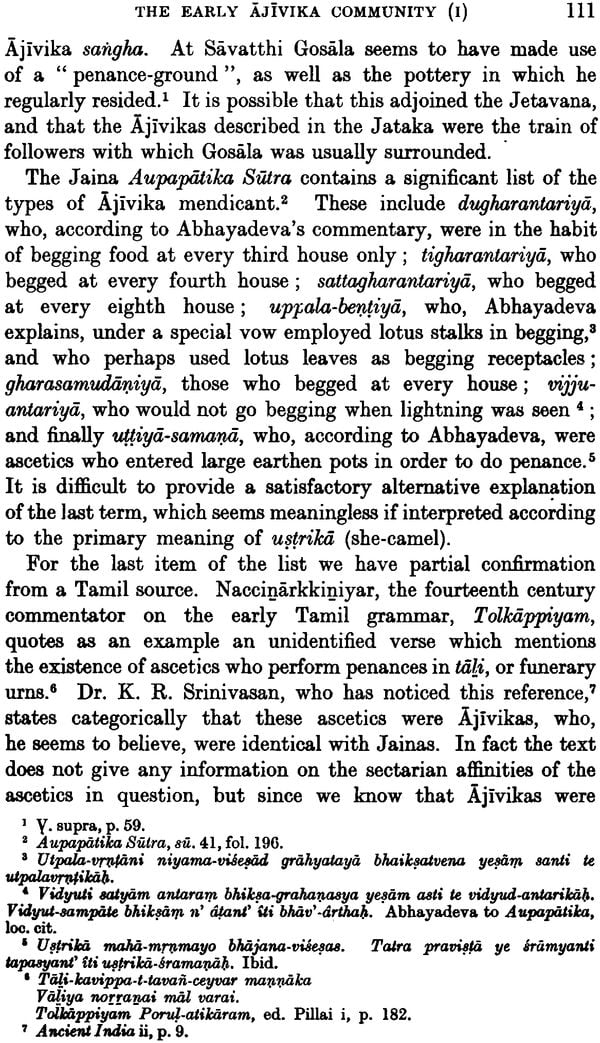
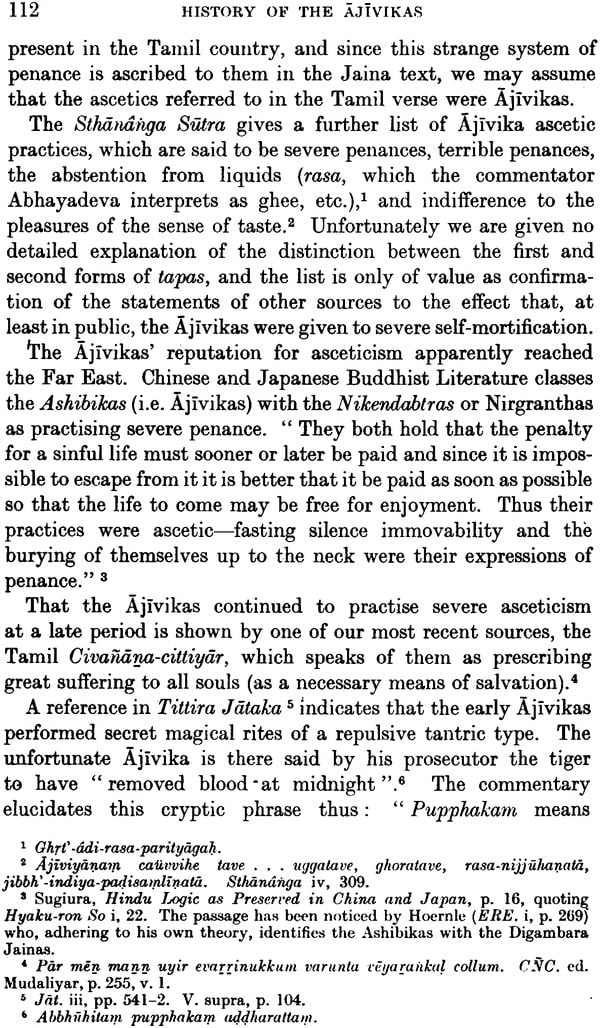
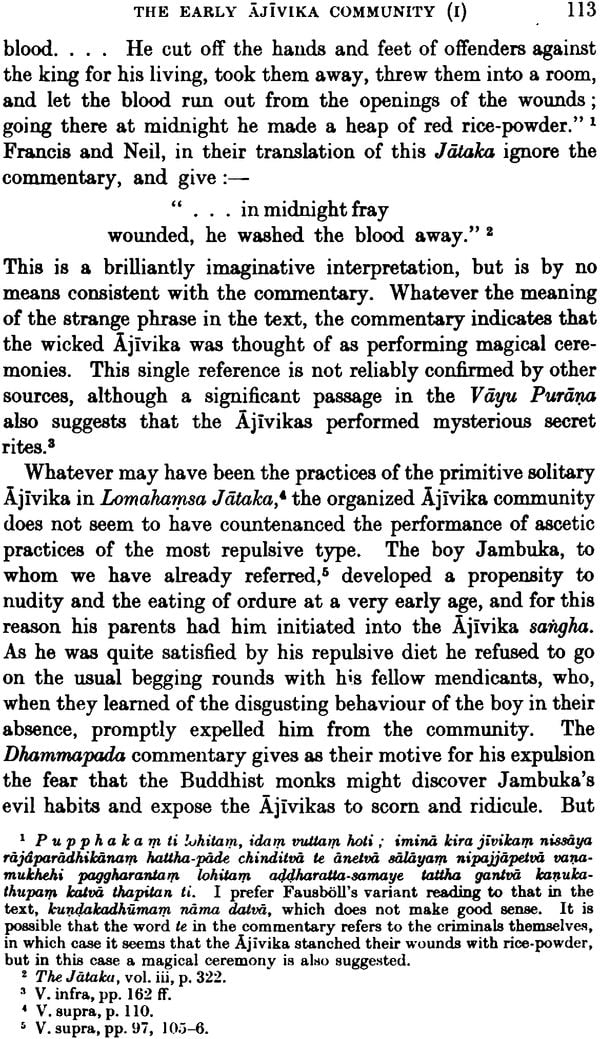
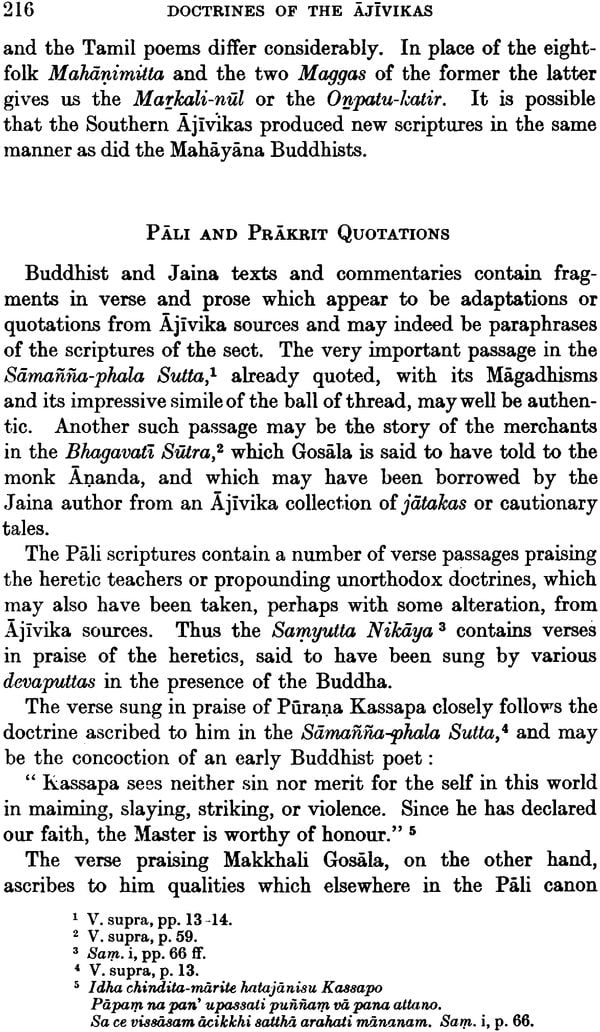
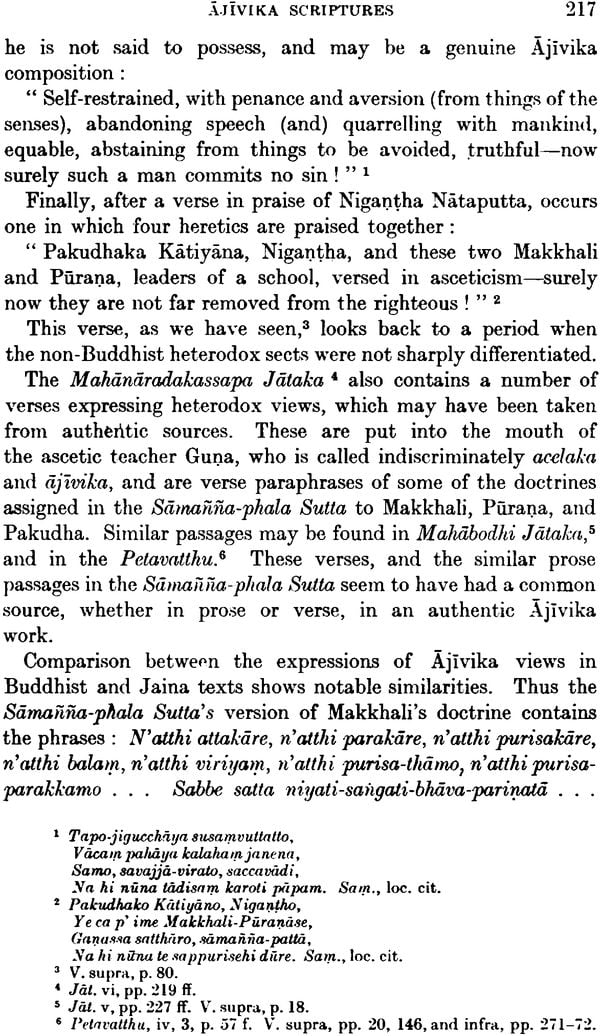
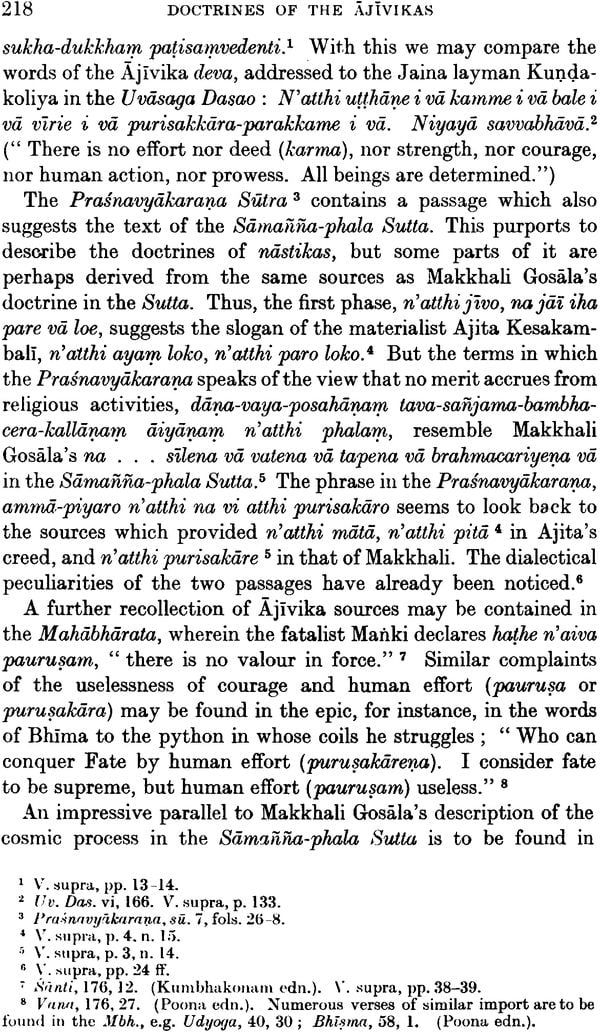
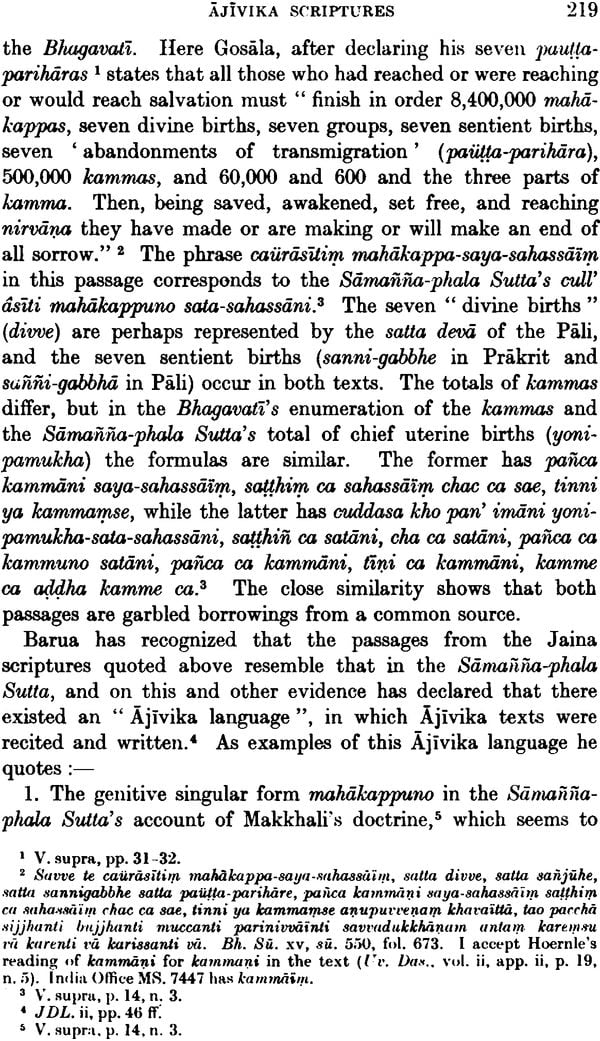
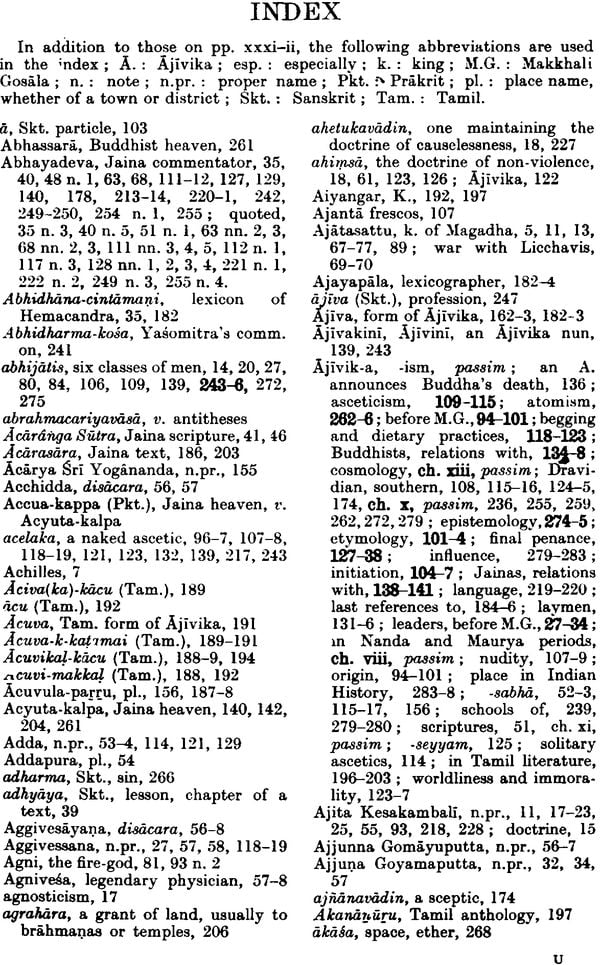
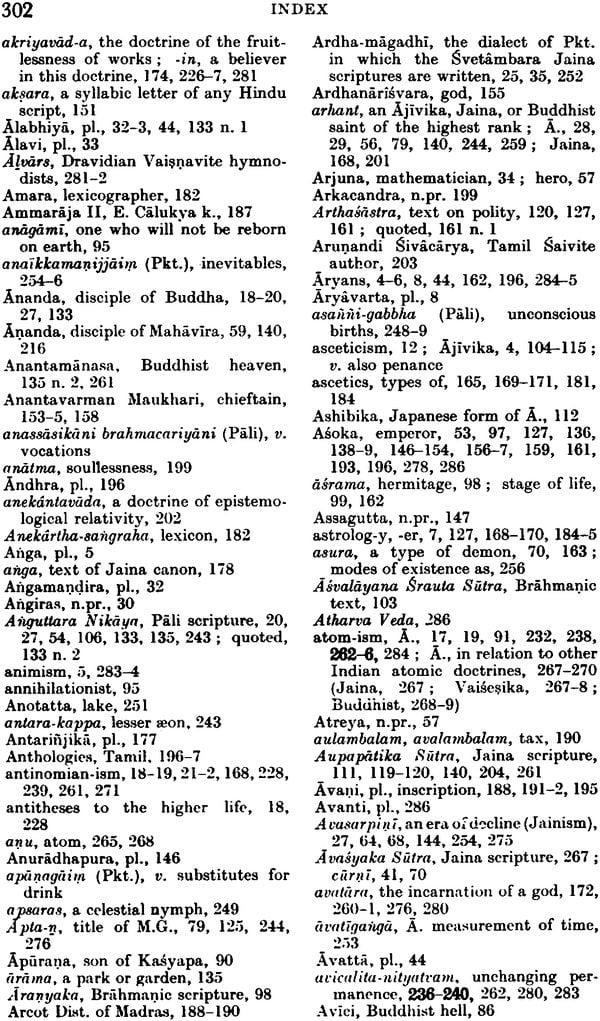

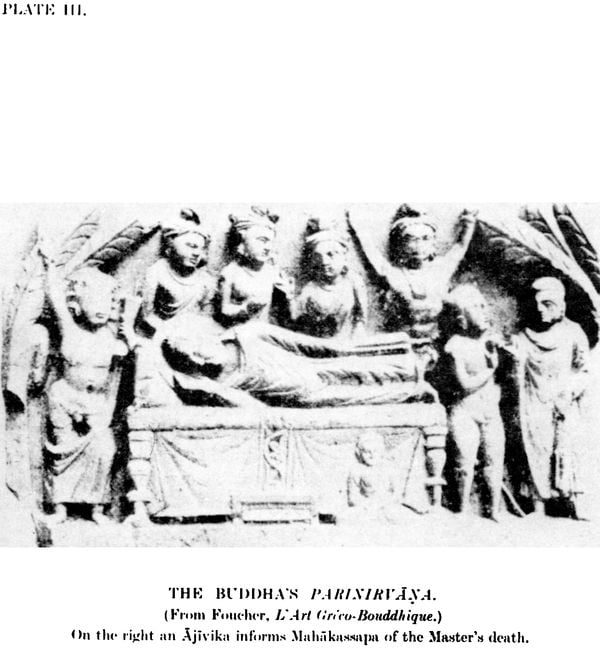
Your cart is currently empty.